Wawel Underground: The Lapidarium
The new exhibition housed in the cellars of the royal palace presents a hitherto unexhibited collection of early modern architectural details and stone sculptures discovered during archeological excavations and preserved from the 19th century to the present day. For the first time, visitors will be able to see how the Renaissance residence was built, experience history hidden for centuries, and learn about the people to whom we owe the restoration of Wawel Royal Castle.
Wawel Underground is a continuation of and integral complement to The Lost Wawel and Wawel Recovered exhibitions.
Due to the nature of the exhibition, we recommend taking an audio guide (included in the ticket price, collection of the device at the entrance to The Lost Wawel exhib).
Wawel Underground is a continuation of and integral complement to The Lost Wawel and Wawel Recovered exhibitions.
Due to the nature of the exhibition, we recommend taking an audio guide (included in the ticket price, collection of the device at the entrance to The Lost Wawel exhib).
See exhibition teaser.
A lapidarium is a “museum collection of stones, stone sculptures, monuments, architectural fragments...” exhibited outdoors or indoors (in Latin lapidarius means “concerning stones” from lapis, lapidis meaning “stone”). The dictionary definition does not begin to convey the richness the word contains. As interest in collecting art was reemerging in the Renaissance, complete works were most highly prized. Fragments of stone architectural decorations were merely an addition to collections of painting, sculpture, and ceramics. In the eighteenth century, however, collectors slowly began to appreciate their historic and scholarly significance. The first museum to hold a stylistically consistent collection stone fragments was founded in Verona. With the subsequent Romantic and sentimental trend in European culture, fragments of architectural details and stone decoration of buildings acquired new meaning. The emotional and aesthetic qualities of the “broken fragments” were incorporated into artificial ruins situated in parks. The nineteenth century was a time of great archaeological discoveries. Huge quantities of fragments of ancient stonework was acquired through excavation and assembled into large museum collections. Museums and related exhibitions are established near the excavation sites. Far-reaching specialization has led to the establishment of museums dedicated to architectural history. These institutions hold and display lapidary collections, in addition to conducting research.
With the new romantic-sentimental trend in European culture, fragments of architectural details and stone decoration of buildings acquire new content. The emotional and aesthetic qualities of the 'faults' were used to incorporate artificial ruins into parks. The 19th century was a time of great archaeological discoveries. Huge quantities of fragments of ancient stonework acquired through exploration form large museum collections. Museums and special museological and archaeological exhibitions are established near the excavations. In contemporary establishments dedicated to architectural history, a place is also envisaged for lapidary collections.
With the subsequent Romantic and sentimental trend in European culture, fragments of architectural details and stone decoration of buildings acquired new meaning. The emotional and aesthetic qualities of the “broken fragments” were incorporated into artificial ruins situated in parks. The nineteenth century was a time of great archaeological discoveries. Huge quantities of fragments of ancient stonework was acquired through excavation and assembled into large museum collections. Museums and related exhibitions are established near the excavation sites. Far-reaching specialization has led to the establishment of museums dedicated to architectural history. These institutions hold and display lapidary collections, in addition to conducting research.
THE HISTORY OF THE COLLECTION
The Wawel Royal Castle lapidarium has a long and eventful history. Its origins are inextricably linked to the history of the recovery of the Castle from Austrian hands. Tomasz Prylinski (1847–1895), the author of the project to restore the royal castle, recognized the scientific and conservational role of architectural fragments. In 1880–1882, he excavated sites next to the northern and eastern elevations of the royal palace, which resulted in a sizeable collection of architectural details. These fragments enabled him to reconstruct elements of the architectural decorations of the palace, which had been removed when the residence of the kings of Poland was adapted to barracks for the Austrian army. The pieces of stonework excavated by Pryliński were placed in a shed which served as a makeshift warehouse, but which did not adequately protect the valuable collection. Efforts to find other, more suitable premises took a long time. During this time, a considerable part of the collection was dispersed. By 1894, only ninety fragments of the original 478 were recorded. Austrian soldiers unceremoniously used the smaller stones for floor grinding, while the larger ones were broken and used as building blocks in the construction of new barracks buildings. As a result of restoration work carried out between the two world wars by Zygmunt Hendel (1862–1929) and Adolf Szyszko-Bohusz (1883–1948), the Wawel lapidarium was significantly enriched. The rooms on the first floor above the royal stables were allocated for the storage of the collection. Unfortunately, during the Nazi German occupation, most of the artefacts were destroyed. Only a small collection of barely 164 objects survived.
Today, thanks to ongoing post-war conservation and restoration work, the collection has grown to more than three thousand objects.
THE EXHIBION SPACE
The exhibition of early modern architectural details is located in the east wing of the royal palace. It fills the historic Renaissance cellars and is integrally connected with part of the exhibition The Lost Wawel. The underground architectural site comprises a series of historic rooms created in the first quarter of the sixteenth century. The brick barrel-vaulted spaces are arranged in enfilade and covered with brick barrel vaults, the cellars were constructed using many stone elements from the demolition of the Gothic castle. The profiles of the architectural details repurposed as building material for the lowest floor of the new edifice can be seen in the walls of the rooms, giving an unusual aesthetic and display effect. These are lapides viventes – living stones. In addition, clear traces of earlier buildings and equipment of the Gothic castle – such as the lower part of the Jordanka Tower and the palace well – have been preserved in the cellars. These elements form part of the narrative of the exhibition which relates to the medieval buildings of the upper castle and, as witnesses to the past, speak to us in the language of stones.
Stone buildings have been built on Wawel Hill since the turn of the tenth and eleventh centuries. Valuable stone from demolished older buildings was used in the construction of new edifices. This practice was followed throughout the long history of masonry buildings on the hill. The acquisition, preservation, inventory, and development of the collection is the primary objective of the Wawel Castle Lapidarium. The study repository, where we make the “stone treasures” available, is an exhibition that combines elements of the authenticity of the Wawel interiors with the truth of the collection stored there.
Dr. Beata Kwiatkowska-Kopka, exhibition curator
Head of the Department of the Lapidarium and Archaeological Reserves
Stone buildings have been built on Wawel Hill since the turn of the tenth and eleventh centuries. Valuable stone from demolished older buildings was used in the construction of new edifices. This practice was followed throughout the long history of masonry buildings on the hill. The acquisition, preservation, inventory, and development of the collection is the primary objective of the Wawel Castle Lapidarium. The study repository, where we make the “stone treasures” available, is an exhibition that combines elements of the authenticity of the Wawel interiors with the truth of the collection stored there.
Dr. Beata Kwiatkowska-Kopka, exhibition curator
Head of the Department of the Lapidarium and Archaeological Reserves
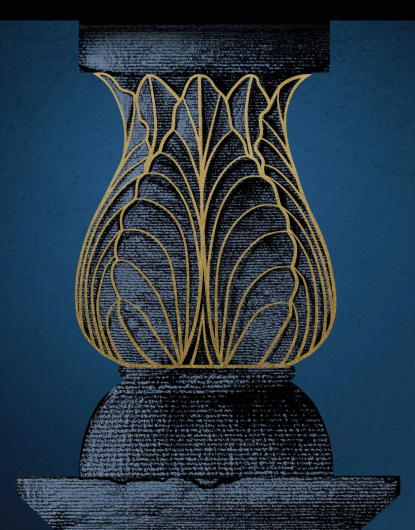

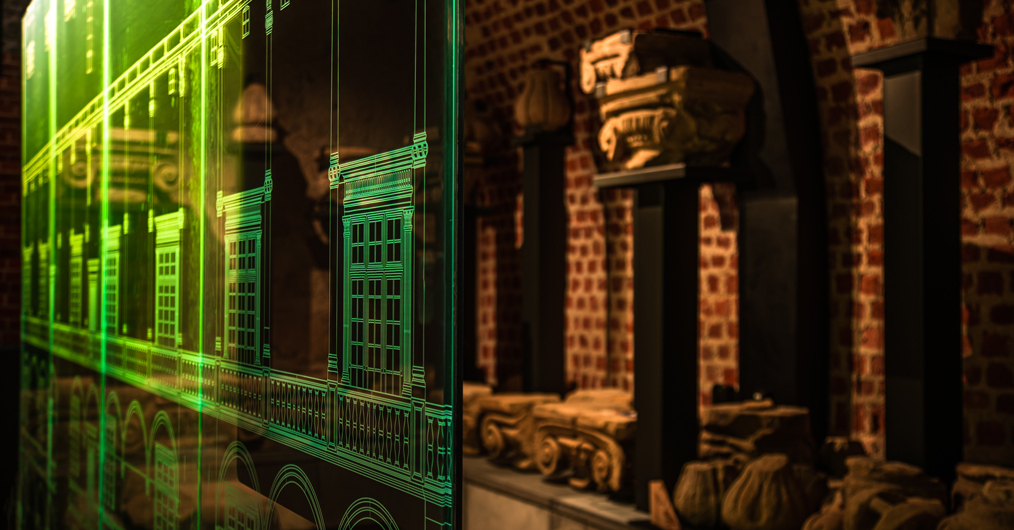

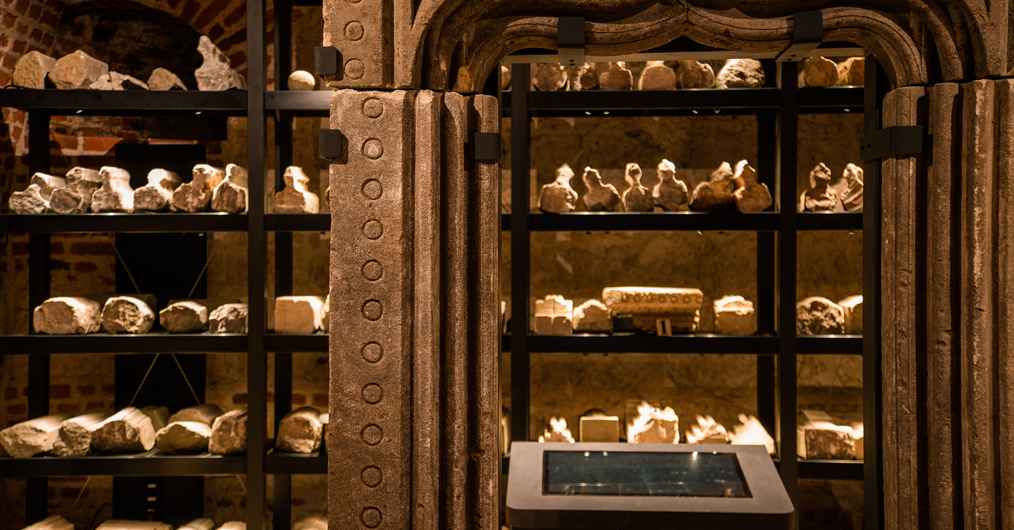


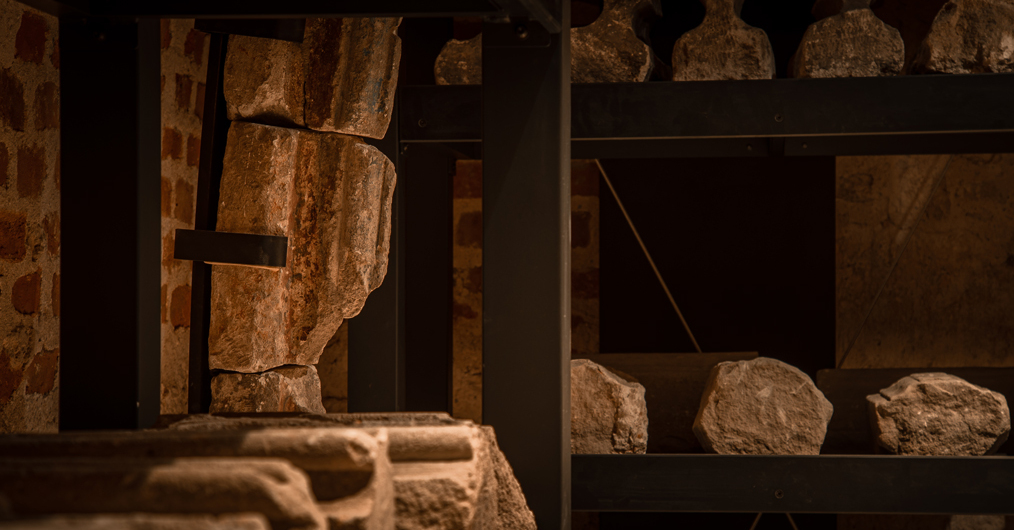
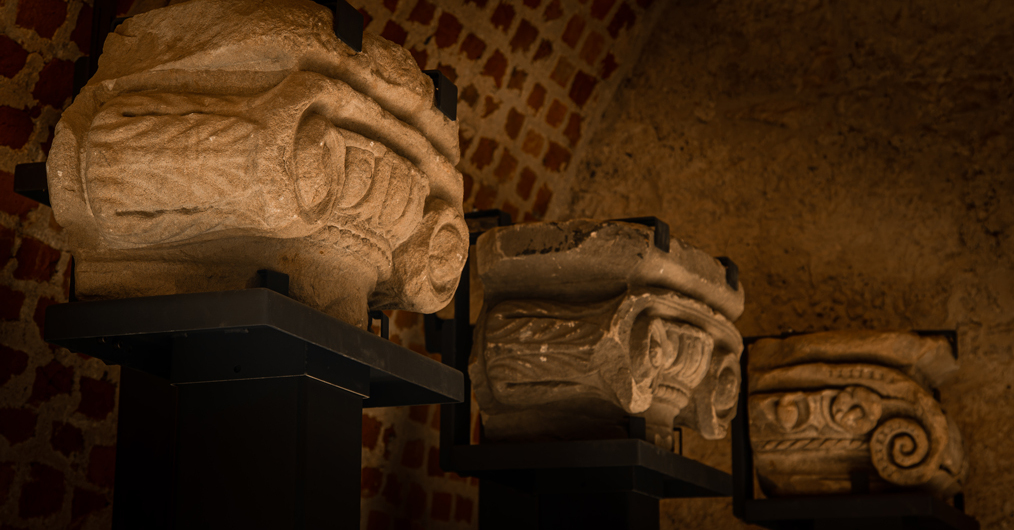
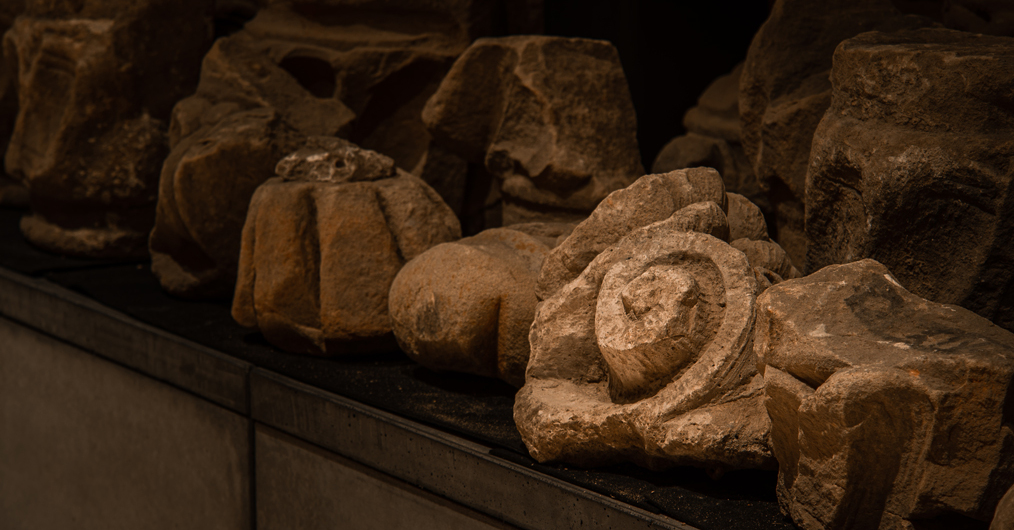
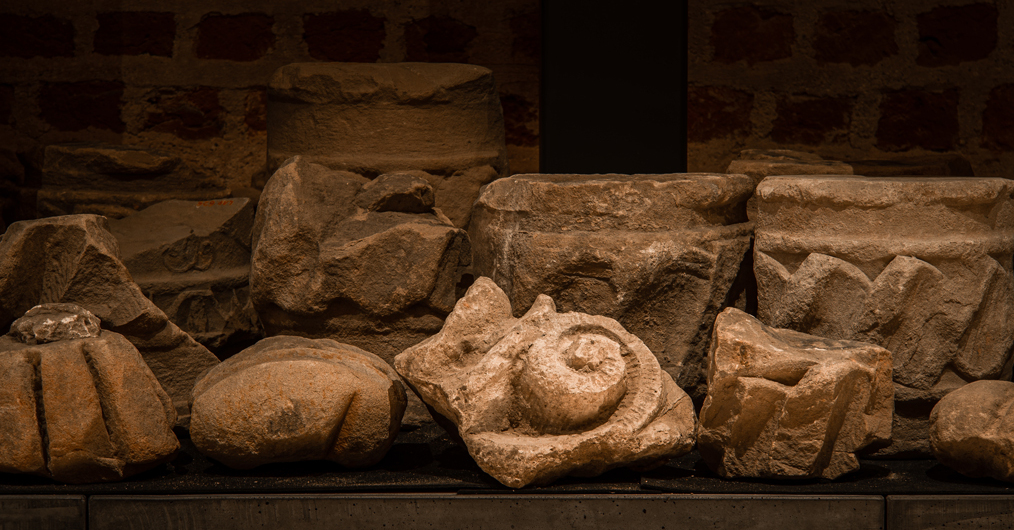
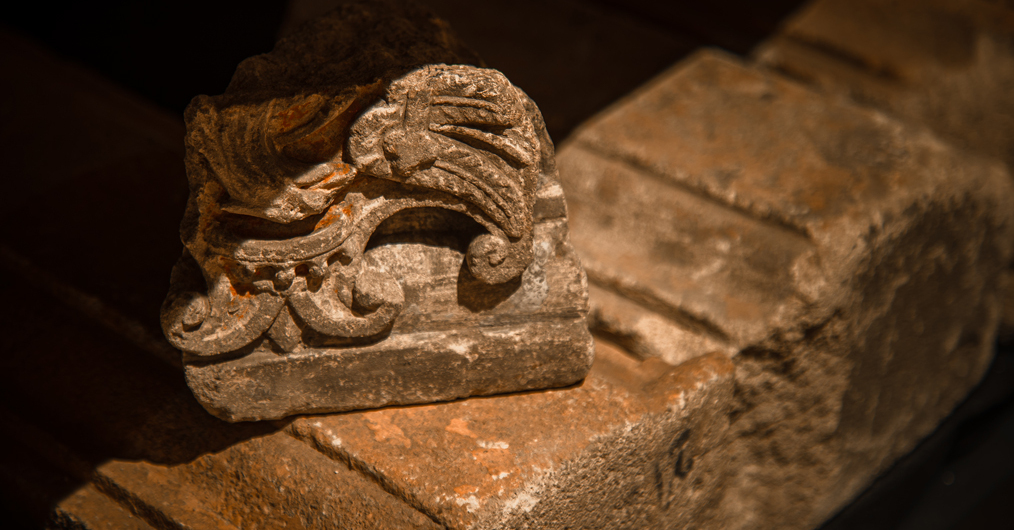
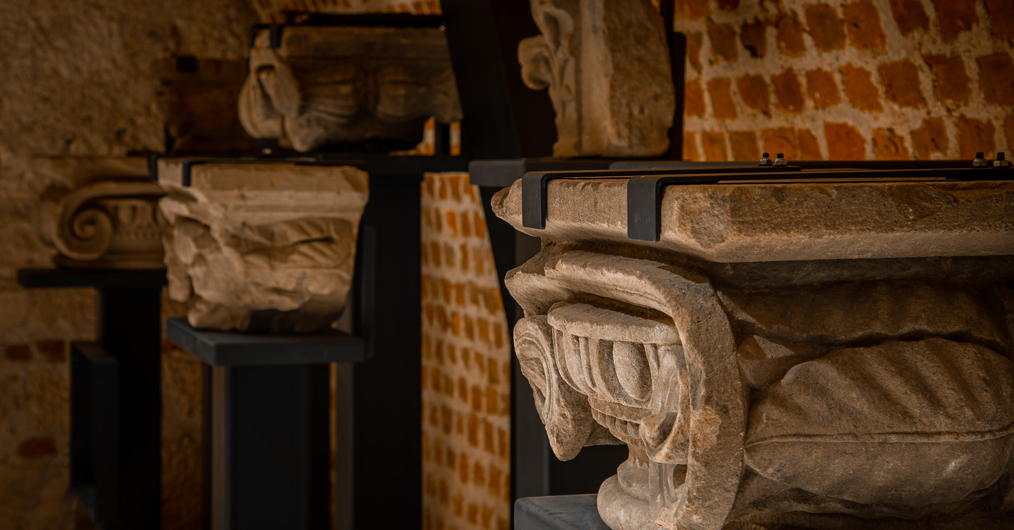
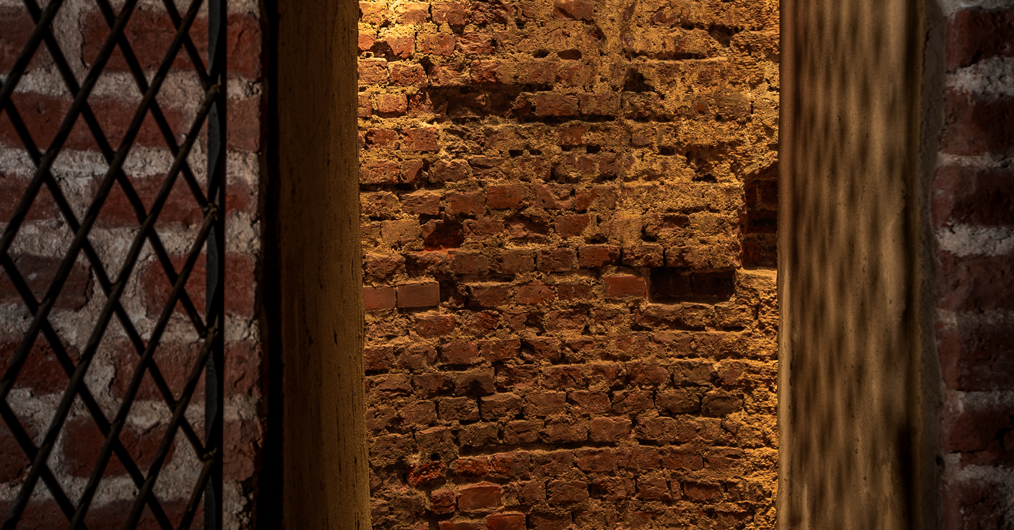




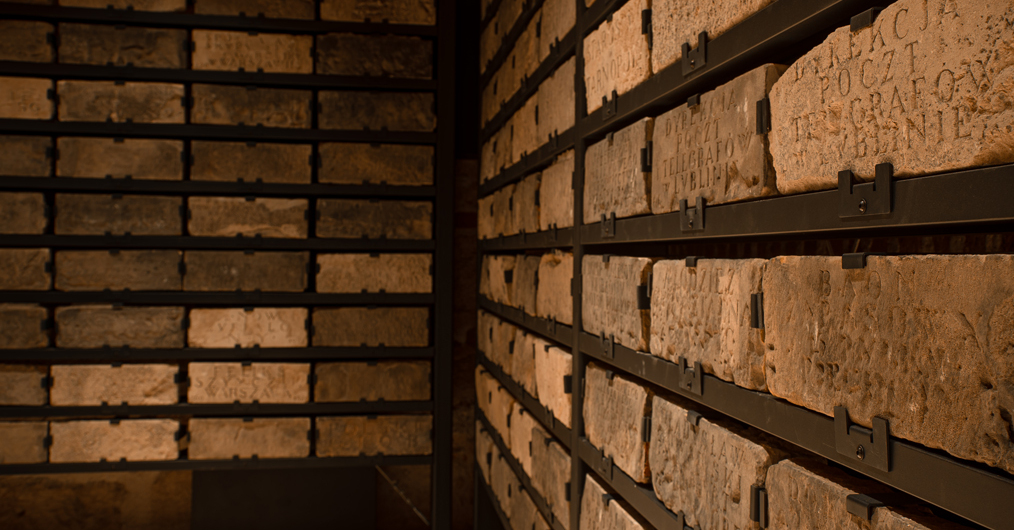



 Co-financed with funds from the Minister of Culture and National Heritage of the Republic of Poland
Co-financed with funds from the Minister of Culture and National Heritage of the Republic of Poland
 Co-finianced with funds from the National Fund for the Restoration of Krakow’s Monuments
Co-finianced with funds from the National Fund for the Restoration of Krakow’s Monuments
 Wawel Royal Castle Strategic Partner
Wawel Royal Castle Strategic Partner
 Wawel Royal Castle Partner
Wawel Royal Castle Partner
 Education Patron and Partner of the Exhibition "Wawel Underground: The Lapidarium"
Education Patron and Partner of the Exhibition "Wawel Underground: The Lapidarium"
 Partner of the Exhibition “Wawel Underground: The Lapidarium”
Partner of the Exhibition “Wawel Underground: The Lapidarium”
 Partner of the Exhibition “Wawel Underground: The Lapidarium”
Partner of the Exhibition “Wawel Underground: The Lapidarium”
 Advertising Partner
Advertising Partner
















